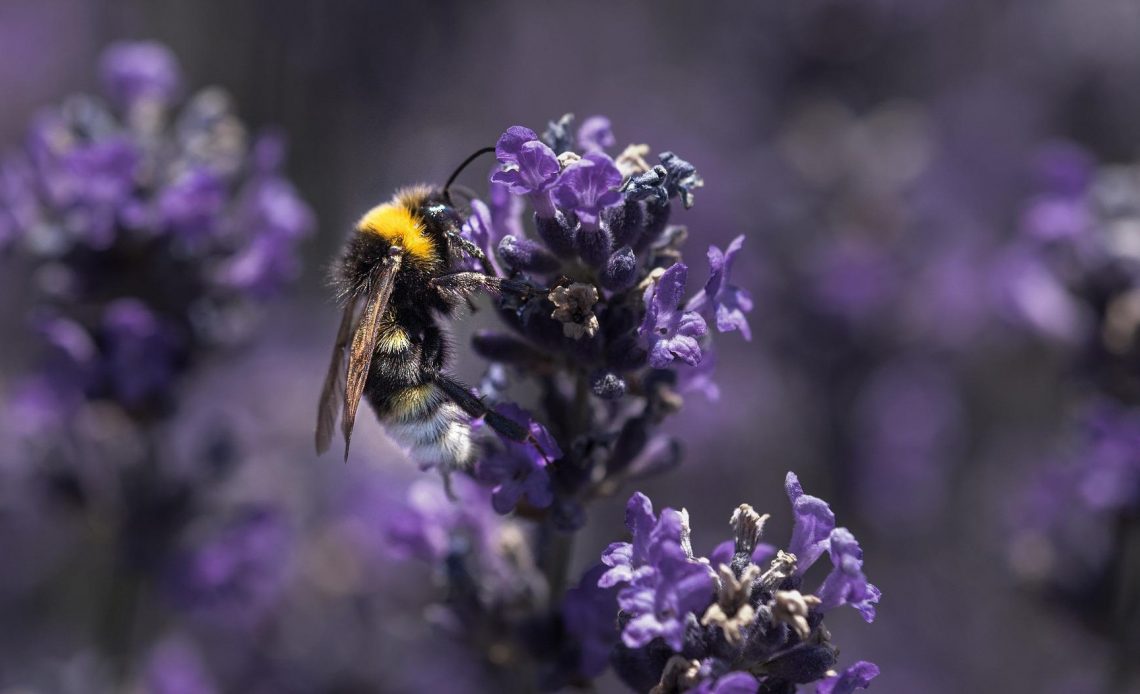

We’re here to help! Wild Yards is a completely free website that is 100% dedicated to helping you create a wildlife-friendly, sustainable yard. Read more
WildYards is reader-supported. When you buy a product through a link on our site, we may earn a comission. Every product is independently selected by our (obsessive) editors and our reviews are unbiased and objective. Read more about our mission or our privacy policy.
Bees are some of our most important pollinators – and the plants they feed on have a symbiotic relationship with them. Lilac bushes are some of the fastest, brightest-blooming plants across the US – but do bees like lilacs as much as other plants?
Bees love lilacs. They provide a fantastic amount of nectar and pollen that the common honeybee, in particular, thrives on. The lilac, too, depends highly on visiting bees to survive.
Why do bees like lilacs?
Lilacs are not only famously full of nectar and pollen, but are also some of the easiest flowers to spot in many gardens. Bursting into bright purple-blue, their blooms sprout from fast-growing bushes in full sun. In particular, the lilac is very easy for honeybees to find in USDA hardiness zones 7 through 11. Some lilacs fare best in zones 3 to 8, so be sure to research your particular specimen.
The lilac flower is famously dense, which helps to provide ample pockets of nectar – meaning a single lilac bush can play host to multiple bees at any one time. This also proves useful for bees who would otherwise have to rove around looking for several plants to feed from during any given day. A healthy lilac bush proves to be a spectacular bee buffet!
It’s also likely to grow in full bloom when most bees are highly active across the US – emerging in spring and summer.
You may even find that some species of bee use lilacs and their bushes to help raise young. While not common across all US states, the leafcutter bee relies upon the leaves from lilac bushes – with the plant providing additional value to visiting pollinators.
Lilac bushes also tend to thrive across the sunny seasons longer than many other plants, meaning you’ll attract bees looking for reliable food sources for months at a time.
While it’s worth remembering there are hundreds of different species and varieties of lilac growing across the US, the vast majority diverge from being nectar-rich and gorgeous to look at!
What else do lilac bushes attract?
Lilac bushes are ‘superfoods’ for any garden, in that they will provide nectar to bees, hummingbirds, butterflies and more. They are brightly colored enough to catch the eyes of most roving pollinators, and the fact they grow in such large clusters means there is often more than enough nectar to go around.
Lilac flowers are perfectly shaped to appeal to more than honeybees and leafcutters. The long beaks of visiting hummingbirds can easily probe in to feed, while butterflies find it comfortable to sit and rest on their slightly open petals while drinking from within.
Tips on growing lilacs to attract bees
While the lilac is a guaranteed bee attractor, it’s a good idea to grow these flowers alongside other bee-favored plants, such as peonies, so they have a varied crop of blooms to feast from. Given that your lilac bushes will likely bring butterflies and hummingbirds fluttering, too, it makes sense to put on a spread of different plants!
Lilacs propagate well in clusters, hence their propensity to sprout up in fluffy, purple bushes. Try and grow multiple together to create bigger clusters – the bigger the bush, the more obvious the plant, and the more space you’ll have for pollinators feeding at once.
The lilac doesn’t tend to do well in deluges of water and prefers to be out in the full sun – another reason why bees can find them so easily. Be sure to plant them in soil that drains clear, and where they can expect at least half a day’s sun (around five to six hours should be enough).
You’ll normally do best planting them towards the end of fall, or even at the start of spring, ahead of their prime growing season. They’ll normally start blooming in May, ideal for bees on a springtime hunt.
It’s good to give lilac bushes and clusters space around other plants, particularly as it’s susceptible to mildew and other diseases. Why not grow a few towards the far end of your garden to act as a fragrant welcome to visiting bees? Alternatively, lilacs make great welcoming flowers to grow close to doorways – just be wary of insect visitors getting in your way.
What flower do bees like the most?
Lilacs are very high on most bees’ favorite flower lists, though you’ll also be able to attract bees to your garden with a heady selection of daffodils, lavender, daisies, jasmine, and clematis. Bees don’t have a single favorite flower – but be sure to grow sweet-smelling plants that grow in clusters – and avoid the color red (they’re blind to it!).
Growing lilacs is a great way to attract bees to your garden, and for the most part, they are very easy to maintain in full sun. Be sure to grow other flowers bees love to boost your garden’s variety, and you’ll be welcoming droves of pollinators in no time.
